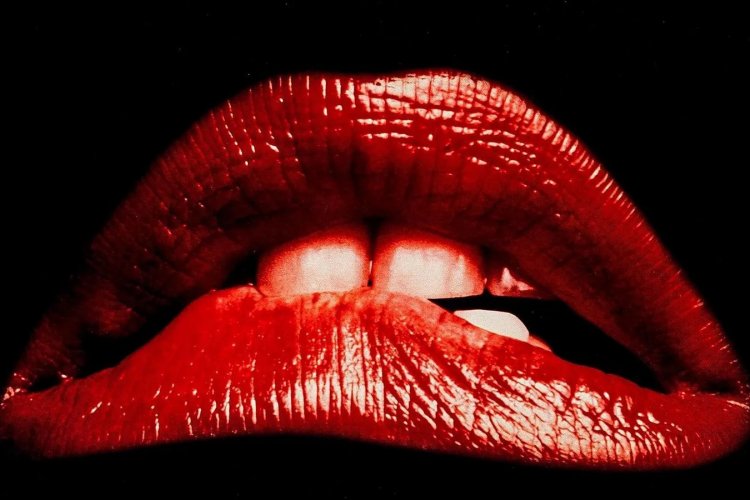Mandarin Monday: Why the Dragon Raising Its Head Means We Should Now Cut Our Hair
Mandarin Monday is a weekly column where we help you improve your Chinese by detailing learning tips, fun and practical phrases, and trends.
A month of quarantine is long enough for most of us to lose the track of time and control of our hairstyle (发型 fàxíng). That's at least our excuse for posting a week after the "dragon raises its head" holiday (龙抬头 lóng táitóu, the second day of the second lunar calendar month) officially passed, better known as the day when it is once again ok to cut your hair without fear of killing your uncle. In short, according to ancient Chinese astrology, it is believed that more yang energy rises from the earth during this time, creating additional precipitation and hopefully a bumper harvest.
In a more modern context, it means that barbershops (理发店 lǐfà diàn) are starting to reopen (even during this irregular time), allowing the hair-tangled masses to sort out what they've been growing for the past several weeks.
With that been said, communicating with your barber (理发师 lǐfà shī) is likely to be even harder than usual during this period given that you'll both be wearing masks. Therefore, go prepared with these common hairstyle terms and phrases. (If it doesn't come out right, please don't sue us!)
波波头 bōbōtóu - Bob

Said to be born in 1909 and originally forced upon women who didn’t cherish their chastity, it didn't take long for the bob (波波头 bōbōtóu) to be co-opted as a chic and fresh hairstyle among the world's most fashionable. Soon, the bob came to represent the independent woman and its shortness and versatility suited the women's movements the world over. Uma Thurman (乌玛瑟曼 wū mǎ sè màn) may have immortalized the haircut in Pulp Fiction (低俗小说 dīsú xiǎoshuō) but most Chinese people will tell you that their first memory of the bob came from old photos of their mother sporting the arguably much less sleek mushroom haircut (蘑菇头 mógū tóu).
黑长直 hēi cháng zhí - Long, black, straight

A common hairstyle among Asian women as well as Japanese men, the long, black, straight (黑长直 hēi cháng zhí) can be tricky to pull off for people who have curly hair (卷发 juǎnfà) but can be achieved by straightening (拉直 lā zhí) the hair first. Some people also call this type of cut “clear noodle soup” (清汤挂面 qīngtāng guàmiàn) on account of its similarity with the key ingredient's shape.
飞机头 fēijī tóu/背头 bēitóu - Quiff

A hairstyle that is eternally in and out of fashion (过气 guò qì), every boy has tried or at least thought about having quiff at one point in their life. The long, gravity-defying haircut was of course first made iconic by Elvis (猫王 māo wáng) and has been reproduced by a new generation of rockabillies ever since.
莫西干 mò xī gān - Mohawk

An unconventional and bold choice that is said to be originally inspired by the traditional hairstyle of one Indian (印第安 yìndì'ān) tribe before becoming the punk cut du jour, the mohawk won Chinese men’s heart in one simple strike when David Beckham (贝克汉姆 bèikè hàn mǔ) rocked it in 2000 (apparently inspired by Robert de Niro's portrayal of Travis in Taxi Driver). As one of the biggest male fashion icons of the 21st century, you can bet that many men followed suit, to varying degrees of success.
非主流 fēi zhǔliú/洗剪吹 xǐ jiǎn chuī - Emo cut

When emo and this hairstyle were still a part of the cultural movement in Germany, the rest of Europe, and later, America, in the '80s and '90s, it was embraced by a young generation shamelessly in touch with their emotions. The same thing happened in China, but almost 20 years later. Around 2010, the emo cut started to appear on Chinese social media and gradually spread from the metropolises to smaller towns, adapting to the Chinese non-mainstream (非主流 fēi zhǔliú) environment. Most notably, it was commandeered by small city hairdressers, where it got increasingly flamboyant, and given the name "wash, cut, dry" (洗剪吹 xǐ jiǎn chuī) in reference to the "basic" full-service combo found in many of them. The "cheapest," most extreme, and most explosive examples of the emo cut are fittingly dubbed firework hair (烟花头 yānhuā tou).
Yes, we realize these are some of the less practical examples of hairstyles you'll be seeking out for post-CNY trim. With enough luck, between the stress and the pollution, we'll all soon be bald (秃顶 tūdǐng) and hair will be considered a quaint concern of the past.
In case you came here for a useful guide, here are a few sentences that may actually come in handy:
- 请把头发剪短一点。qǐng bǎ tóufà jiǎn duǎn yīdiǎn. Please cut my hair a little shorter.
- 我要染这个颜色。wǒ yào rǎn zhège yánsè. I want to dye my hair this color.
- 请帮我修修刘海。qǐng bāng wǒ xiū xiū liúhǎi. Please trim my bangs.
- 请帮我修修胡子。qǐng bāng wǒ xiū xiū húzi. Please trim my beard.
- 请帮我吹干。qǐng bāng wǒ chuī gàn. Please blow-dry my hair dry.
- 请帮我剪个适合我的发型。qǐng bāng wǒ jiǎn gè shìhé wǒ de fàxíng. I want a hairstyle that suits me.
READ: If You Love Your Uncle, Avoid These Chinese New Year Taboos
Images: Men's Hairstyle Now (via Unsplash), Wallpaper Abyss, Xuehua, Yahoo







